For barbecue enthusiasts, nothing compares to a perfectly cooked brisket – tender, juicy, and flavor-packed. But achieving that perfect texture, flavor, and moisture level in brisket isn’t always easy, as it requires paying close attention to the cooking temperatures and timings. One crucial decision in the process is deciding what temperature to pull brisket – or the right internal temperature where the meat is cooked enough to be tender and moist but not overdone.
This decision can make the difference between a delicious, melt-in-your-mouth brisket and a tough, chewy one. In this article, we’ll explore the options for what temp to pull brisket and provide tips and tricks to help you achieve a perfectly cooked and delicious brisket every time.
How Long Should A Brisket Cook Before It Can Be Pulled?
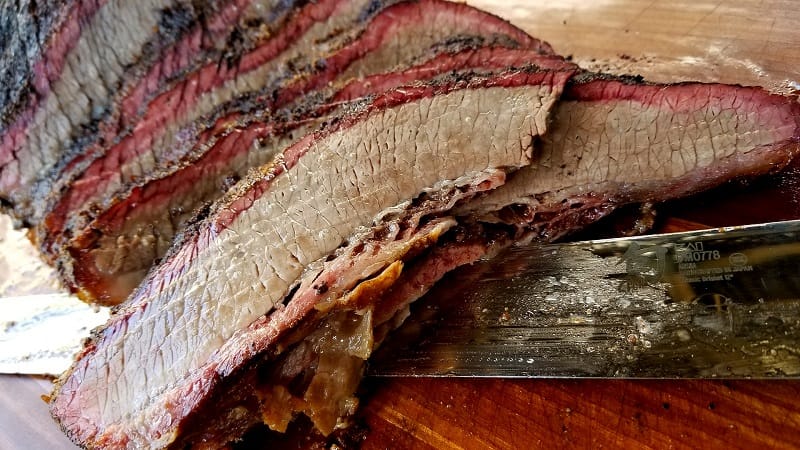
When it comes to cooking brisket, it’s essential to get the timing just right. After all, no one wants a tough and chewy piece of meat on their plate. Based on factual data, the ideal internal temperature for brisket is between 195°F -205°F. This indicates that it is ready to be pulled from the smoker. As a rule of thumb, at a cooking temperature of 225°F, each pound of brisket will take approximately one and a half hours to cook.
After cooking, the brisket should rest for at least one hour to even out the temperature. Some experts recommend resting the meat for two to four hours to guarantee a tender and juicy cut. Overall, it’s crucial to monitor the cooking time and internal temperature to ensure the brisket is cooked to perfection, so grab a cold drink and let the smoker work magic.
How to Test if your Brisket is Ready to Pull Off the Smoker?
If your brisket is ready to pull off the smoker, the key to testing is to pay attention to time and temperature. A good rule of thumb is to cook your brisket at 225-275 degrees Fahrenheit for 1 – 1.5 hours per pound of brisket. This time frame can vary depending on the thickness of your brisket, so it’s essential to keep an eye on the temperature and ensure it reaches the right internal temperature.
One way to test the temperature of your brisket is to insert a meat thermometer into the thickest part of the brisket. The internal temperature should be between 195-205 degrees Fahrenheit for a brisket ready to pull off the smoker. If it’s not quite there yet, you’ll need to cook it for a bit longer.
If you don’t have a meat thermometer, you can also test the readiness of your brisket by inserting a sharp knife into the thickest part of the brisket. If the knife slides in and out easily, your brisket is ready to pull off the smoker.
Once your brisket is ready to pull off the smoker, let it rest for at least 30 minutes before carving. This will help ensure that all the juices stay inside the brisket, making it juicy and mouth-watering.
What Temp To Pull Brisket?
According to factual data, the ideal temperature range to pull brisket off the smoker is between 195°F to 205°F. However, some prefer to pull theirs at 180°F or wrap it at 185°F to 195°F. But regardless of the temperature preference, it is essential to remember that the meat can rise a few more degrees after removing it from the smoker.
To achieve the most flavorful and tender brisket, it’s best to start checking the internal temperature at 195°F and remove it when it reaches 200°F to 205°F. Ultimately, the decision on when to pull brisket should be based on the internal temperature and the feel of the meat.
What Temp To Pull Brisket After Wrapping?
If you’re cooking a brisket, you want it to be perfectly moist and tender. And achieving that delicate balance between firmness and tenderness depends on taking it off the smoker at just the right moment. One indicator that your brisket is ready to be pulled is when it reaches an internal temperature of 195°F to 205°F.
This temperature range ensures the brisket has enough time to cook through and develop the desired texture and flavor. Once you hit that temperature, it’s time to pull the brisket from the smoker and wrap it up. Many pitmasters recommend double or triple-wrapping the brisket in butcher paper to retain moisture and protect the surface of the meat.
What Temp To Pull Brisket From Oven?
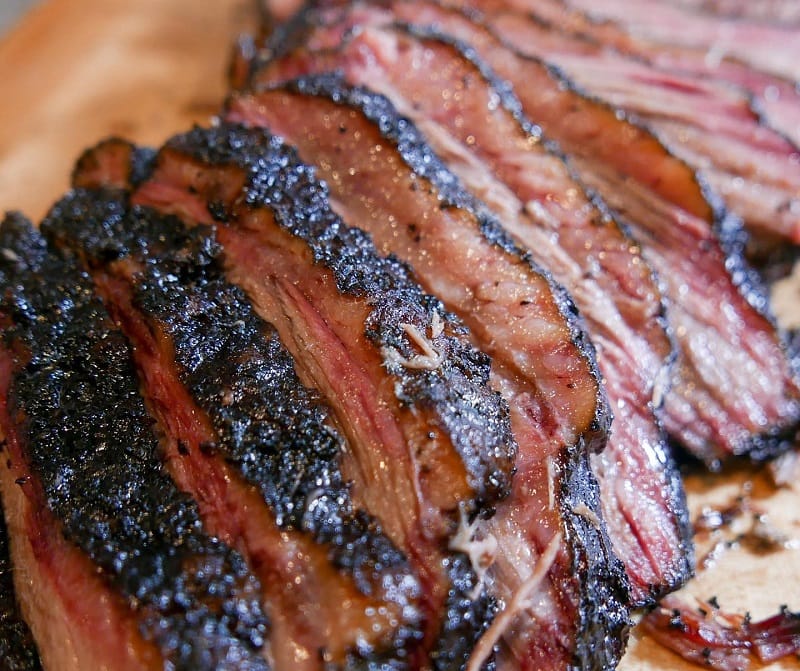
The best internal temp for brisket is between 195°F -205°F, which indicates that it’s time to pull the brisket from the oven or smoker. However, it’s worth noting that the optimal temperature may vary from one recipe to another. For example, Angry BBQ recommends pulling the brisket from the smoker between 202°-205°F.
Another essential tip is to let the brisket rest for at least an hour after removing it from the oven, which allows it to continue cooking and tenderizing. By following these guidelines, anyone can cook a delicious and perfectly cooked brisket every time.
Read more:
Is There Any Difference In The Final Outcome Between Cooking Brisket At 225°F, 250°F, Or 275°F?
The answer is yes. The lower the cooking temperature, the longer it will take to cook the brisket, resulting in a more tender and juicier final product. When the cooking temperature is higher, the brisket will cook faster but won’t be as tender or juicy.
Cooking a brisket at 225°F will produce a low and slow-cooked brisket for 8-10 hours. This will yield a tender, juicy, and flavorful final product. Cooking at this temperature allows the fat to render slowly and evenly, creating a melt-in-your-mouth texture.
Cooking a brisket at 250°F will produce a brisket in about 6-8 hours. This will result in a tender and juicy brisket, but not as tender or juicy as a brisket cooked at 225°F.
Cooking a brisket at 275°F will produce a brisket in about 4-6 hours. This will result in a tender and juicy brisket, but not as tender or juicy as a brisket cooked at 225°F or 250°F.
Ultimately, choosing between cooking brisket at 225°F, 250°F, or 275°F is up to you and the desired outcome. If you want a more tender and juicy brisket, then cooking at a lower temperature is the way to go. If you wish for a brisket cooked faster, cooking at a higher temperature is the way.
The Optimal Internal Temperature for Brisket?
However, according to factual data, the best internal temperature for brisket falls between 195°F and 205°F. This is when the meat is ready to be pulled off the smoker or grill. It’s important to note that the brisket will continue to cook and rise in temperature even after being removed from the heat source.
Therefore, monitoring the feel of the brisket is just as important as checking its internal temperature. Beginners can aim for a slightly lower temperature range, but the experts recommend hitting 205°F for the best results. Ultimately, the optimal internal temperature for brisket will come down to personal preference and experience in cooking this meat.
How Do You Know When Your Brisket Is Done If You Don’t Have A Thermometer?
The best way to tell when your brisket is cooked is to use the “poke test.” You should feel it give slightly when you poke your brisket with a fork or knife. If it’s still very firm, it’s not done. If it’s too soft, it’s overcooked. The ideal texture for a cooked brisket is a slight give when you press on it.
Another way to tell if your brisket is cooked is to look at the color of the juices. The juices should be clear and not too bloody when you cut into the meat. If the juices are still pink, the brisket needs to cook longer.
Finally, you can also use the “slice test” to check if your brisket is done. When you slice into the brisket should be tender and not too tough. If it’s still tough and chewy, it needs to cook longer.
Can You Overcook a Brisket in a Smoker?
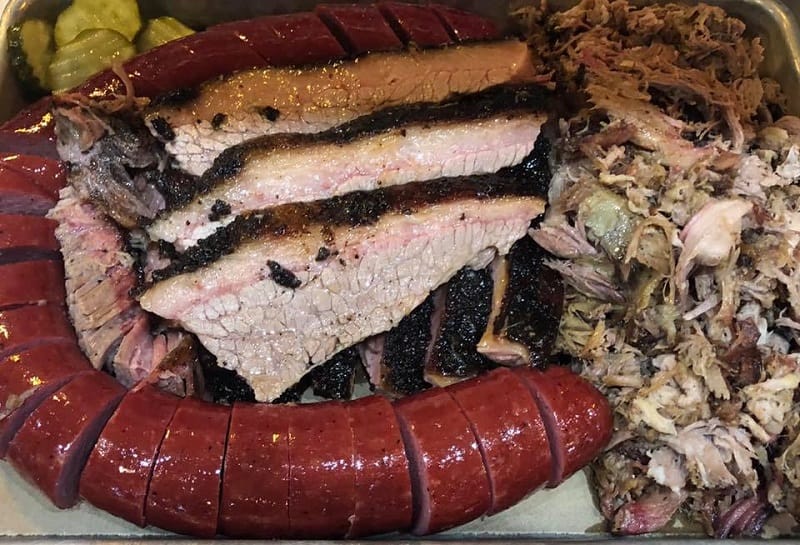
The good news is, yes, it is possible to overcook a brisket in a smoker. However, it is not as easy as it might seem. There are a few key things to remember when smoking a brisket to ensure it comes out perfectly cooked and flavorful.
First, you should keep the temperature of your smoker in check. A low, steady temperature is key to a moist, flavorful brisket. Most experts recommend a temperature between 225-250 degrees Fahrenheit. If your smoker gets too hot, it can cause the fat in the brisket to render and burn, resulting in an overcooked, dry piece of meat.
Second, it is essential to pay attention to the size of the brisket. If the brisket is too large, it may take too long to cook and overcook. A good rule of thumb is to cook one pound of brisket per person.
Third, you should always use a thermometer to check the brisket’s internal temperature. The ideal temperature for a tender, juicy brisket is 195-205 degrees Fahrenheit. Any higher and the brisket will be overcooked.
Finally, it is essential to rest the brisket after cooking. This will help keep the moisture and flavor locked in. Letting the brisket rest for at least 30 minutes before slicing will ensure it is perfectly cooked.
How to Wrap Brisket?
If you’re ready to try wrapping a brisket for your next barbecue, here’s what you need to know.
Before you get started, make sure you have the following items handy:
- A large piece of heavy-duty aluminum foil or butcher paper
- Your favorite rub or marinade
- A baking sheet
Instructions
- Start by seasoning your brisket generously with your favorite rub or marinade. Cover the entire brisket with the rub, including the sides and bottom.
- Preheat your oven to 250°F.
- Place your brisket on a baking sheet.
- Wrap the brisket in aluminum foil or butcher paper. Ensure the foil or paper is tight against the brisket, with no air pockets.
- Place the wrapped brisket in the oven and cook it for 6 to 8 hours.
- When the brisket is done cooking, carefully remove it from the oven and let it rest for about 10 minutes.
- Finally, unwrap the brisket and enjoy!
Tips and Tricks
- Try to avoid opening the oven door while the brisket is cooking. This will cause the heat to escape, affecting the cooking time.
- If you want to add extra flavor to your brisket, add some wood chips to the foil or paper before you wrap it.
- If you want to ensure your brisket is extra juicy, try wrapping it with a layer of bacon before you wrap it in foil or paper.
- If you want extra smoky flavor, add some liquid smoke to the rub or marinade.
Tips For Smoking A Brisket
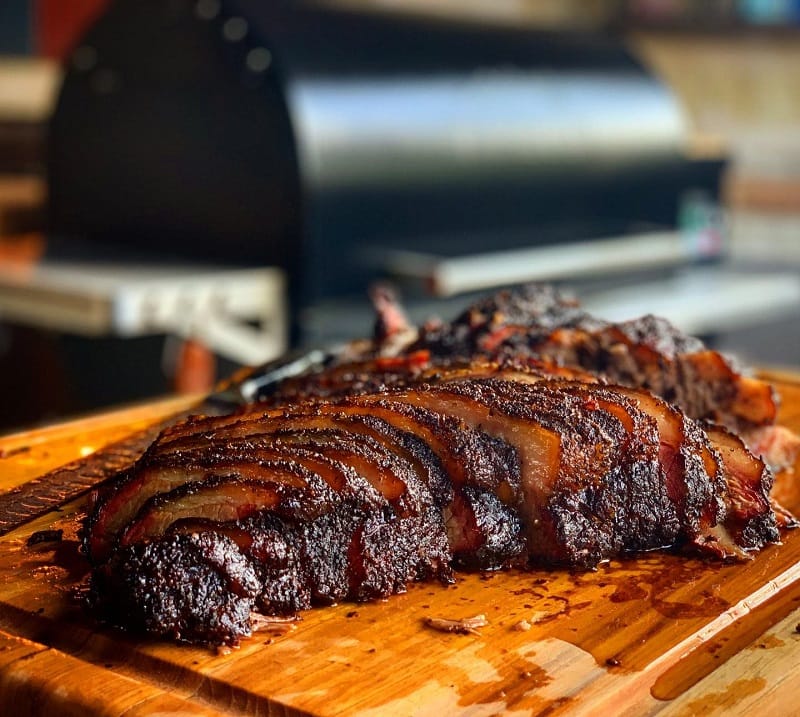
Smoking a brisket is a great way to enjoy a delicious, tender, and flavorful meal. It can also be intimidating, so we’ve got some tips to help you get started.
- Start with a quality cut of meat. A good brisket must be a good cut of meat, so make sure you’re starting with a quality one. Look for a brisket with good marbling and fat content, which will help ensure the meat stays tender and juicy.
- Trim the fat. Trimming fat from the brisket is key to getting a tender, juicy finished product. Ensure you leave some fat on the brisket, which will help keep the meat moist during cooking.
- Season the brisket. Brisket needs to be seasoned before smoking. You can use dry rubs, marinades, or even a simple salt, pepper, and garlic mixture. Cover the entire brisket with the seasoning and let it sit overnight in the refrigerator.
- Use the right wood. The type of wood you use for your smoker will have a big impact on the flavor of your brisket. Choose a wood that imparts a nice smoky flavor, such as hickory, mesquite, or oak.
- Start the smoker. Get your smoker going and make sure it’s at the right temperature. For a brisket, you’ll want to aim for a temperature of around 225 to 250 degrees.
- Place the brisket in the smoker. Place the brisket in the smoker and let it cook for about 12 to 14 hours or until the internal temperature reaches 195 degrees. Make sure to check the temperature every few hours.
- Let the brisket rest. Once the brisket is done cooking, let it rest for at least an hour before slicing. This will help the juices redistribute and ensure the meat stays tender and juicy.
- Slice and enjoy. Slice the brisket against the grain and enjoy your delicious, tender, and flavorful smoked brisket.
What Are Some Tips For Ensuring A Pulled Brisket Retains Its Juices And Does Not Dry Out?
Pulled brisket is a delicious, tender cut of meat that can easily dry out if not cooked properly. But with a few handy tips, you can ensure your pulled brisket stays juicy and flavorful.
First, use a slow or electric pressure cooker for cooking your brisket. This will ensure the heat is evenly distributed and the brisket cooks low and slow. Cooking your brisket on low heat for a longer period will help keep the juices sealed in and the meat tender.
Second, don’t be afraid to add liquid to the cooking process. Brisket tends to dry out quickly, so adding some liquid, such as beef broth or beer, will help keep the cuts moist.
Third, when shredding your brisket, gently separate the meat fibers with two forks. This will help keep the meat from becoming stringy and dry.
Fourth, let the brisket rest for at least 15 minutes before you serve it. This will give the juices time to redistribute and ensure the brisket is nice and juicy.
Finally, avoid the temptation to overcook your brisket. If you cook it too long, the juices evaporate, leaving you with an unappealing and dry brisket.
Is It Better To Use Indirect Or Direct Heat When Cooking A Brisket For Pulling?
Direct heat refers to cooking the brisket directly over the heat source. This is the most common method of cooking brisket, and it can produce a delicious, juicy, and tender result. However, direct heat can also be tricky – if the temperature is too high or the meat is cooked too long, it can result in a dry and tough texture.
On the other hand, indirect heat involves placing the brisket on a rack or roasting pan above the heat source. This allows the heat to circulate the brisket, resulting in slow, even cooking. The indirect heat also prevents burning and maintains moisture, producing juicy, tender, flavorful meat.
So, which method is better? Ultimately, it comes down to personal preference. Indirect heat is the way to go if you’re looking for a juicy, tender, flavorful brisket. However, direct heat is the way to go if you’re looking for a crisp, smoky flavor.
FAQs – What Temp To Pull Brisket
Is Brisket Done at 200?
When it comes to smoking brisket, there are a lot of opinions and recommendations to consider. One of the most common questions is if brisket is done at 200 degrees Fahrenheit. The factual data suggests that this is not necessarily the case. While brisket can be cooked at 200 degrees, it typically needs more time at a higher temperature range to fully render fat and dissolve collagen.
The best internal temperature for a brisket is between 195°F and 205°F, and it is recommended not to take it past 210°F. After cooking, the brisket should be placed in a cooler to bring down the internal temperature from 200°F to 140°F over a few hours. So, while 200 degrees is a part of the cooking and monitoring process, it is not the final say in determining if a brisket is truly done.
How Long Should A Brisket Rest After Cooking To Achieve Maximum Tenderness?
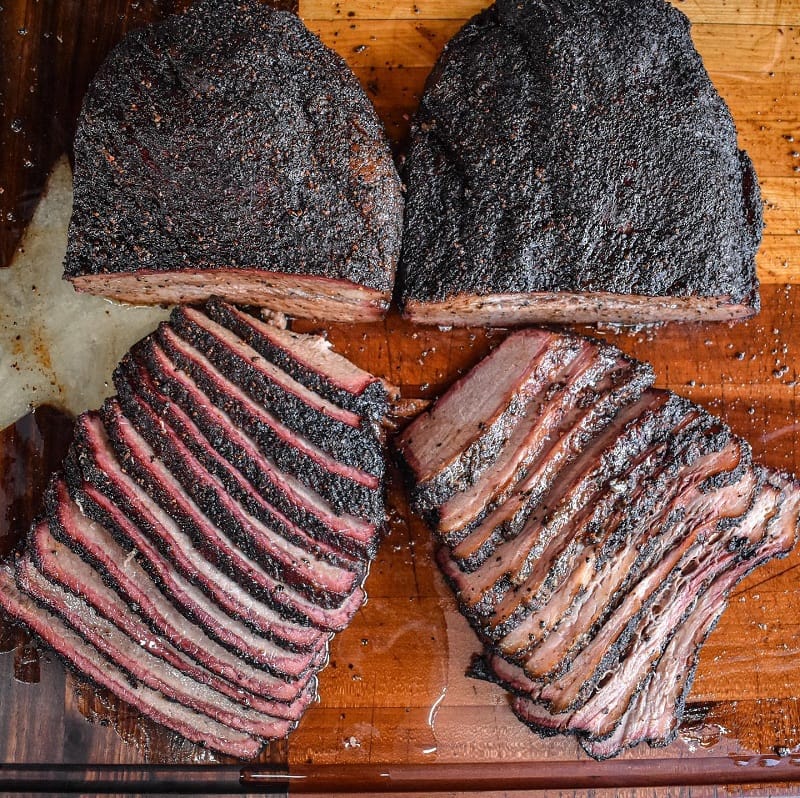
When achieving maximum tenderness in a brisket, it is essential to let it rest after cooking. The general rule is that the brisket should rest for at least one hour, but two or more hours is ideal. This makes the meat more tender and juicy as the muscle fibers have time to relax. However, it’s important to let the brisket come down by 10-15 degrees after getting it from the smoker by resting at room temperature. Otherwise, it may continue cooking and become overdone. Resting a brisket before serving also allows the flavors to settle in and distribute throughout the meat. With a little patience, perfectly tender brisket is well worth the wait.
Is There An Advantage To Trimming Any Fat Off Of A Brisket Before Cooking It?
According to factual data, there is certainly an advantage to trimming some of the fat off of the brisket before cooking it. While a small amount of fat adds flavor and juiciness to the meat, too much fat can be overpowering and have a negative impact on the taste.
Additionally, excess fat can make it harder to cook the brisket evenly and may cause flare-ups on the grill or in the smoker. However, it’s important to note that not all of the fat needs to be removed – leaving a thin layer of fat can help protect the meat from drying out while it cooks.
How Often Should One Check The Temperature Of The Brisket While Smoking?
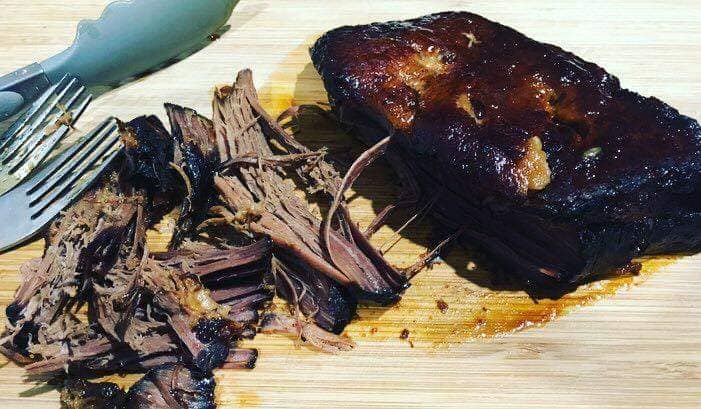
When smoking a brisket, keeping a close eye on its internal temperature is important to ensure it is cooked to perfection. While there is no set rule, checking the temperature every 30 minutes is recommended. This allows the smoker to make adjustments to the heat source, such as adding more wood or adjusting the temperature if needed.
Additionally, keeping track of the temperature can help prevent overcooking or undercooking the brisket. Although it may seem tedious, taking a few extra minutes to check the brisket’s temperature can make all the difference in creating a delicious and perfectly cooked meal.
Conclusion
No matter how you cook your brisket, the key is to get the temperature right. Cook it at a low temperature for a long time to ensure it’s tender and juicy, and you’ll have a delicious cut of beef perfect for your next BBQ.
Do you have any questions about what temp to pull brisket? Let us know in the comments below.
References:
- https://www.charbroil.com/how-tos/smoked-brisket-temperature-guide
- https://blog.thermoworks.com/beef/thermal-tips-smoked-brisket/
- https://www.bhg.com/recipes/how-to/cooking-basics/how-to-cook-brisket/

Hey readers! Chip Holland here, and I’m a Manager of this website. My passion for writing about it only matches my passion for BBQ. Follow my blog for mouth-watering recipes, tips, and tricks for the perfect smoke, grill, and BBQ. I’m sure you won’t be disappointed!
